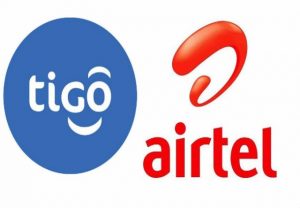 National Communications Authority (NCA), the regulator of Ghana’s telecoms industry has directed five telecom operators in the country to improve their coverage in some communities in the Central Region by the end of December 2015.
National Communications Authority (NCA), the regulator of Ghana’s telecoms industry has directed five telecom operators in the country to improve their coverage in some communities in the Central Region by the end of December 2015.
The directive follows a report released by the NCA, after it tested five of the telcos- namely MTN, Vodafone, Tigo, Airtel and Glo Mobile, except Expresso, on various quality matters in that region from May to June 2015.
In addition to this, the NCA in its Quality of Service (QoS) Monitoring of Cellular Mobile Voice Services report has directed Tigo to cure the traffic congestion at Cape Coast and Elmina, and also sanctioned the same network for violating its Traffic Channel (TCH) Congestion obligation in Central Region.
The survey was conducted in nine towns in the region -Cape Coast, Kasoa, Swedru, Winneba, Elmina, Ajumako, Saltpond, Twifo Praso and Assin Fosu, and looked at the telcos’ Stand-alone Dedicated Control Channel (SDCCH) Congestion Rate; Call Setup Time (CST); Call Congestion Rate; Call Drop Rate ( CDR); Voice Call Audio Quality and Coverage Signal Strength.
The NCA found out in the report that all the telcos, except Tigo, met the Call Setup Times (CST) parameter threshold in certain localities in the Central Region.
Call Setup Time is the period of time elapsing from the sending of a complete destination address (target telephone number) to the setting up of a call to the receiving terminal. It should be less than ten seconds in 95% of cases.
Tigo Ghana, which is headed by Roshi Motman, was the only telco to have met the parameter threshold in all the nine towns in the region within 6 and 9 seconds.
However, MTN Ghana, whose Chief Executive Officer is Ebenezer Twum Asante was able to pass the test in eight of the towns, except Kasoa, where it took its customers more than 10 seconds to get a call through.
While the Haris Broumidis’ led Vodafone Ghana failed in four towns -Elmina, Swedru, Ajumako, and Assin Fosu.
According to the report, customers in these areas continue to spend between 10 and 12 seconds before a call goes through.
Airtel Ghana, headed by Mrs. Lucy Quist failed in Kasoa and Swedru, while Glo Mobile owned by Mike Adenuga, Nigerian telecom investor, also failed to shine in Swedru and Elimia.
Airtel customers spend an extra 4 seconds in Kasoa, for example, before their calls sail through, while Glo customers spend almost 8 seconds before their calls are placed in Elmina.
Despite Tigo being the only telco to have passed the CST test, but failed to pass the Call Congestion Rate (CCR) test. It was the only telecom operator to have failed that test, according to the NCA report.
It stated: “All operators, except Tigo, remained compliant with the licence threshold of less than
one percent (1%) in all the tested locations. There is high traffic congestion on Tigo at Cape Coast and Elmina”.
The Call Congestion Rate is the probability of failure of accessing a traffic channel during call setup.
On Call Drop Rate ( CDR), all operators were in compliance with the Call Drop Rate licence threshold of less than three percent (3%) in all localities tested.
Touching on Voice Call Audio Quality – perceptibility of the conversation during a call, the report indicated that: “Vodafone and Glo were assessed to give GOOD speech quality. MTN, Airtel and Tigo were assessed to give FAIR speech quality”.
The Voice Call Audio Quality is measured using a parameter called the Mean Opinion Score (MOS) which categorizes speech samples in ranges from 1 to 5. 1 is Very Bad, 2 is Bad, 3 is Fair, 4 is Good and 5 is Very Excellent.
Instructively, the Quality of Service (QoS) monitoring system measures many parameters, including coverage signal strength and voice quality. These parameters are in the 3G licence, a complementary licence to the Cellular Mobile Licence.
The Voice Quality is measured by an International Telecommunications Union (ITU) standard P.863 fondly called (POLQA) Perceptual Objective Listening Quality Assessment.
As per the Cellular Mobile licence obligations, the QoS indicators and their respective threshold for compliance under assessment considering the user’s perspective on the Stand-alone Dedicated Control Channel (SDCCH) Congestion Rate; Call Setup Time (CST); Call Congestion Rate; Call Drop Rate ( CDR); Voice Call Audio Quality; and Coverage Signal Strength.
African Eye News.com





